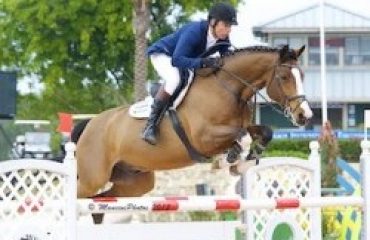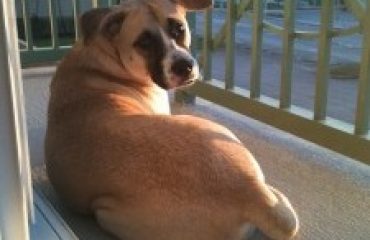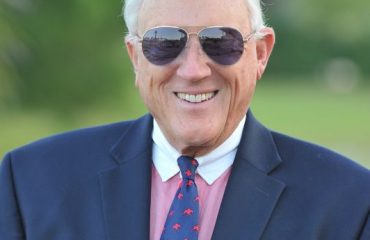
Boyd Martin riding Gloria Callen’s mare Welcome Shadow
Photo by Amber Heintzberger
Well known for both his fun-loving approach to life and his indefatigable work ethic, Boyd Martin has represented the U.S.A. in three-day eventing at two Olympic Games and two World Championships, and was on the gold-medal-winning Pan Am Games team in 2015. Boyd’s wife, Silva Martin, is a grand prix dressage rider and they have a son, Nox. Boyd and Silva train out of their own farm, Windurra USA in Cochranville, Pennsylvania, and spend winters at Stable View Farm in Aiken, South Carolina.
What does helmet safety mean to you personally?
I’ve had my share of knocks on the head, but more importantly my wife, Silva, sustained a traumatic brain injury in a riding accident a few years ago. Her recovery was long and intense and for me, it amplified the importance of a well-made helmet that fits. There’s absolutely no doubt that Silva’s Charles Owen helmet saved her life that day, and we both continue to wear Charles Owen helmets every time we ride. I must say there was a time when we were both pretty casual about wearing a helmet for schooling on the flat, but these days neither of us sits on a horse without a helmet, and even our son, Nox, has had his own helmet since he started sitting on a pony. Helmets vary in sizing and price points and there are affordable options out there that leave no excuse not to wear a helmet. They are also available in a variety of stylish materials for helmets, but whatever it looks like, your head is always the most important fashion accessory!
What advice do you have for adult amateurs who don’t have time to ride every day?
When you’re working a full-time job and coming home to a family, it can be hard to carve out time at the barn, especially if you board a horse away from home. Silva and I are fortunate that riding is our business and we’re now able to live on our own farm and raise our family where we work. For my clients who aren’t able to keep their horse at home, I suggest having a professional ride the horse a couple of days a week if it’s in your budget; if you can’t afford this, either find a capable friend who might like some extra riding time or consider leasing your horse out part of the time to keep him fit and schooled. When you do have time to ride, make the most of your session by focusing on where your performance needs improvement. Don’t try to make up for lack of time in the saddle by doing everything at once, or you and your horse may both end up frustrated and with sore muscles. A sore and cranky horse is not going to make the progress that you desire in your training. Try to bring something positive to each session so that you’ll both look forward to the next ride.
Can you recommend a couple of cross-country schooling exercises for young horses?
The best way to keep young horses confident on cross-country is to keep the fences small and the schooling session relaxed and fun. Tiny logs around the field are the perfect first jumps, and you can walk, trot or canter these without putting any pressure on the horse. Go out with a more experienced horse that can give your horse a lead if you need it, and basically just play around to get the horse used to being out in the open and going over some small fences. Water jumps can be intimidating, but they don’t have to be; walk your horse through the water a few times, then trot and canter through and your horse will probably enjoy himself. You can add a small jump into the water if the horse is confident. Keep things simple and low-key and keep the pressure off, and your horse will associate jumping in the open with having fun. I take a lot of the young horses foxhunting in the fall, as it’s a great way to build their confidence. If you have access to a hunt it’s a great addition to any training program for event horses.













